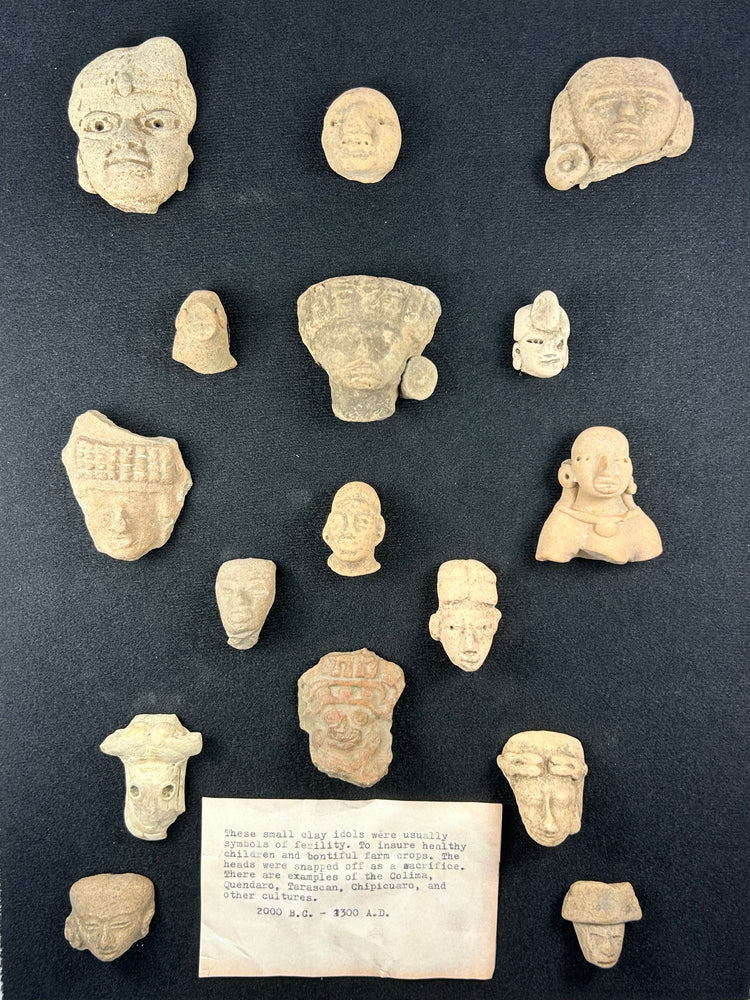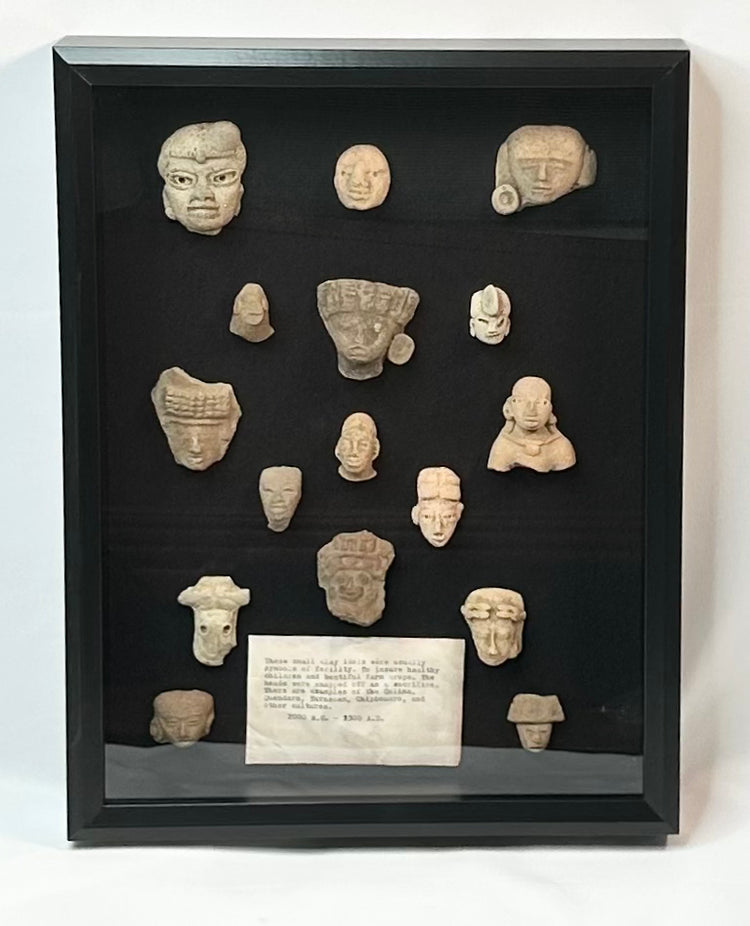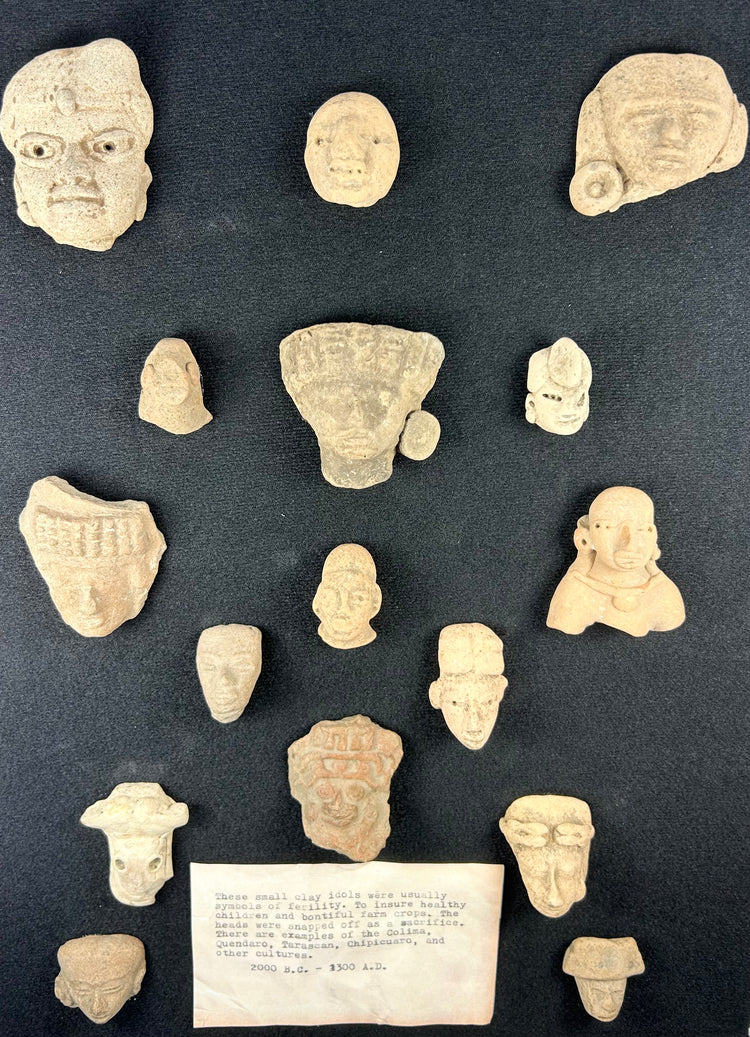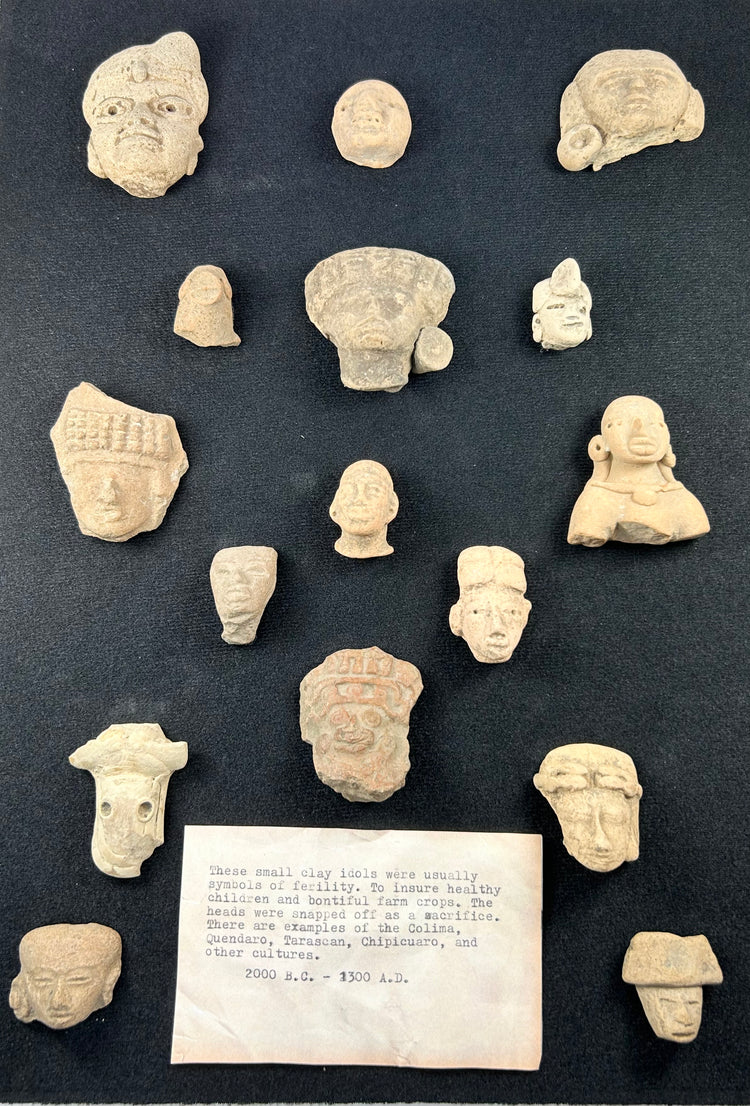Historical Context & Origin
Region: Mesoamerica (Central Mexico & Gulf Coast; Teotihuacan and Veracruz traditions)
Material: Terracotta (earthenware) with burial accretions; mounted in a later wood shadowbox with glazing and an old typed-style collector’s label
Period: Late Formative to Classic Period, circa 200 BCE – 900 CE
Description
This shadowbox presents a large and varied assemblage of sixteen Pre-Columbian terracotta fragments, mounted against a dark background to highlight their individual forms. The collection demonstrates the diversity of mold-made and hand-modeled votive art produced across Central Mexico and the Gulf Coast, including heads, maskettes, busts, and miniature figures. Each fragment retains archaeological character, with earthen deposits and surface patina that attest to long-term burial.
Contents (top to bottom, left to right):
-
Large head fragment with pronounced crest and almond-shaped eyes.
-
Miniature rounded head with simple cap.
-
Maskette face fragment with projecting earflare.
-
Small bust fragment with squared shoulders.
-
Helmeted head with defined vertical nose ridge.
-
Miniature votive head with rounded coiffure.
-
Mask plaque fragment with earflares and crest.
-
Miniature votive head head piece.
-
Small anthropomorphic torso with faint incised details.
-
Tiny head fragment with stylized features.
-
Miniature bust with rounded chest and schematic arms.
-
Head fragment with grid-pattern headdress.
-
Long narrow head with strong nose and thin mouth.
-
Miniature seated figure fragment with earspools.
-
Tiny votive head with simplified features.
-
Anthropomorphic fragment with broad face and rounded base.
The preserved old typed-style collector’s label within the shadowbox identifies these artifacts as Pre-Columbian finds from Mexico, providing an added provenance reference.
Features
- Cohesive display of 16 authentic terracotta fragments.
- Range of head types, busts, figurines, maskettes, and spindle/disc forms.
- Attractive archaeological patina with mineral and soil accretions.
- Shadowbox mount with collector’s label makes it display-ready and educational
Cultural Significance
Terracotta heads and figurines were central to domestic ritual, funerary offerings, and household altars throughout Pre-Columbian Mesoamerica. The presence of maskettes and diverse headdress types reflects Teotihuacan and Veracruz iconographic traditions, while spindle and disc forms underscore the ritualized connection between weaving and the sacred. This assemblage provides a comprehensive overview of religious, social, and artistic practices during the Classic period, making it a valuable resource for both collectors and scholars.
Condition
All fragments are stable, showing losses and surface wear consistent with antiquity. Earthen and mineral accretions enhance molded details. Shadowbox frame is intact and suitable for wall or shelf display.
Dimensions (approximate)
Shadowbox: Height 17.25 in × Width 13.25 in × Depth 2.5 in
Individual fragments: 0.6 – 3 in high
Age
Circa 200 BCE – 900 CE (Late Formative to Classic Period)
Learn More
Learn more about ancient Mesoamerican civilizations and their rich cultural, religious, and artistic traditions-Mesoamerican civilization























